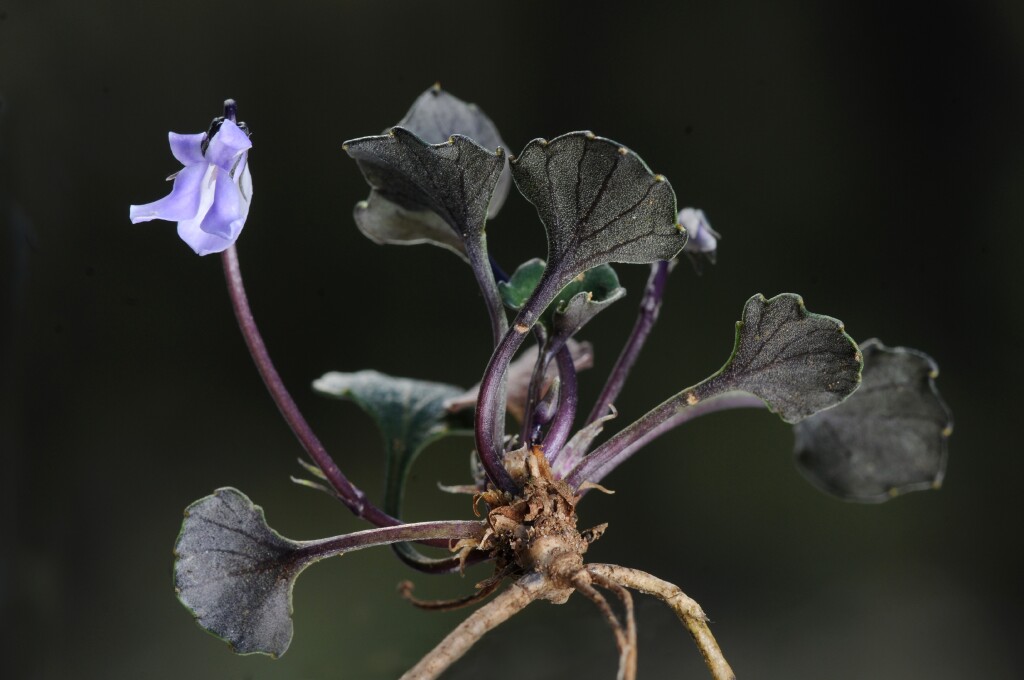Violaceae
Herbs or shrubs. Leaves alternate, rarely opposite, simple, usually with stipules. Flowers solitary or in cymes or racemes, strongly to weakly bilaterally symmetric, bisexual or (sometimes in Melicytus) unisexual, often cleistogamous. Sepals 5, overlapping, persistent; petals 5, free, unequal or equal, overlapping, the lowermost often the largest and then usually spurred; stamens 5, inserted below ovary, alternate with petals, filaments very short, anthers free or just touching, locules 2, opening by longitudinal slits towards centre of flower, the connective usually extending beyond anther into a membranous appendage; ovary superior, 1-locular, placentas usually 3, parietal, ovules 1-several per placenta; style simple, stigma terminal. Fruit a capsule or berry; seeds with endosperm, often arillate.
About 900 species in 22 genera, mostly in tropical and temperate regions; 3 genera and c. 30 species in Australia.
Entwisle, T.J. (1996). Violaceae. In: Walsh, N.G.; Entwisle, T.J., Flora of Victoria Vol. 3, Dicotyledons Winteraceae to Myrtaceae, pp. 361–370. Inkata Press, Melbourne.
 Spinning
Spinning


